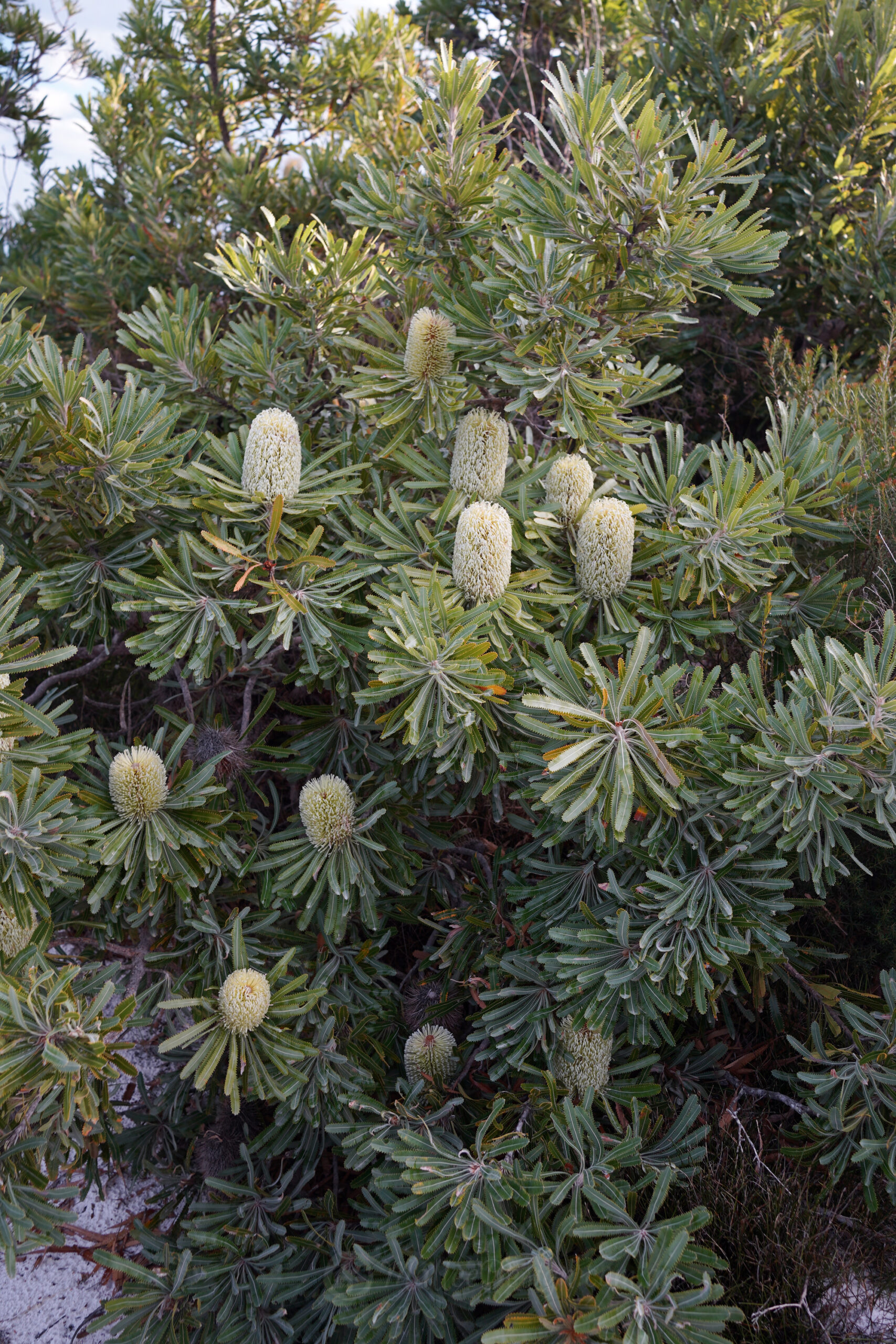-
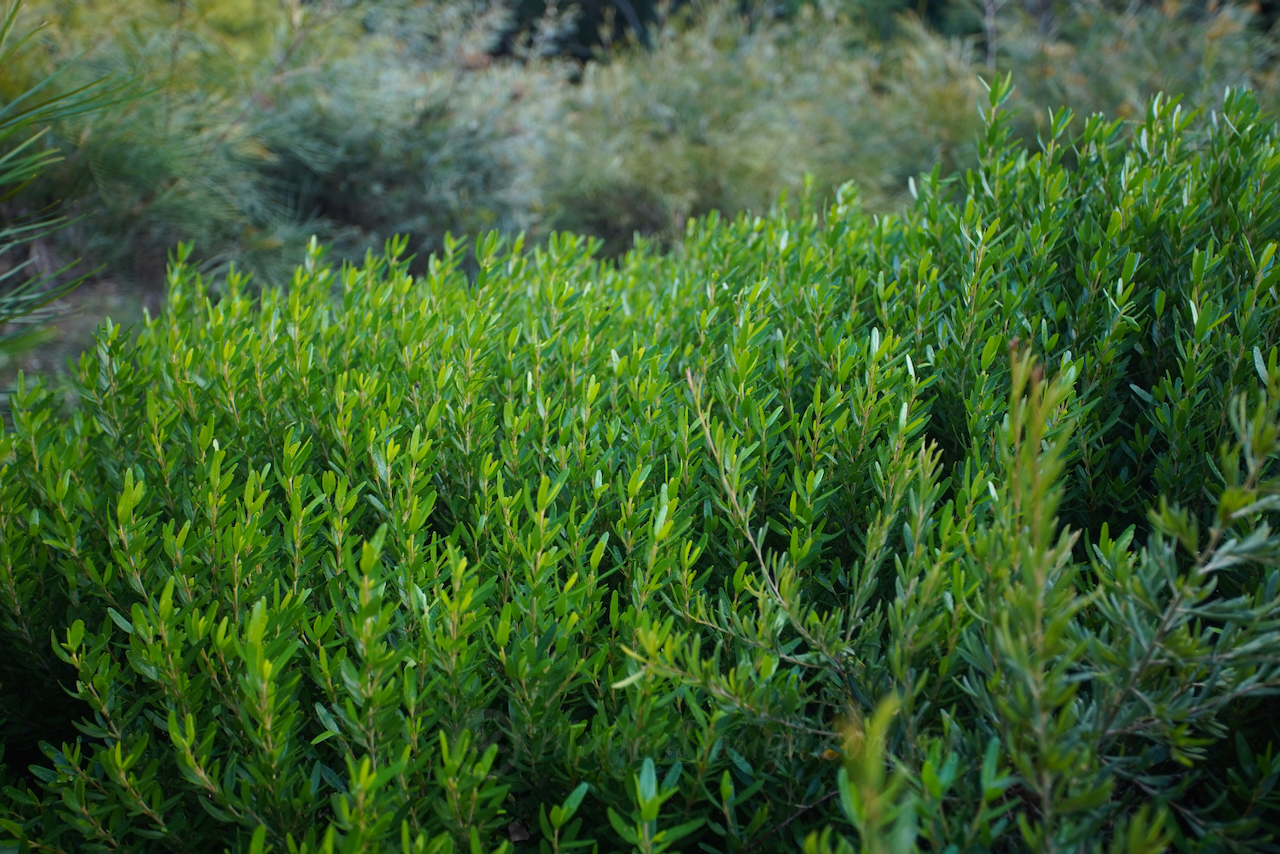
however you like it: correa glabra
This small to medium shrub is commonly known as Rock Correa, due to its ability to grow in gravelly soils, making it super tough. I absolutly love Correas but find it quite difficult to grow them in my location. Correa glabra is easily the toughest one I use in coastal NSW gardens. In fact the…
-
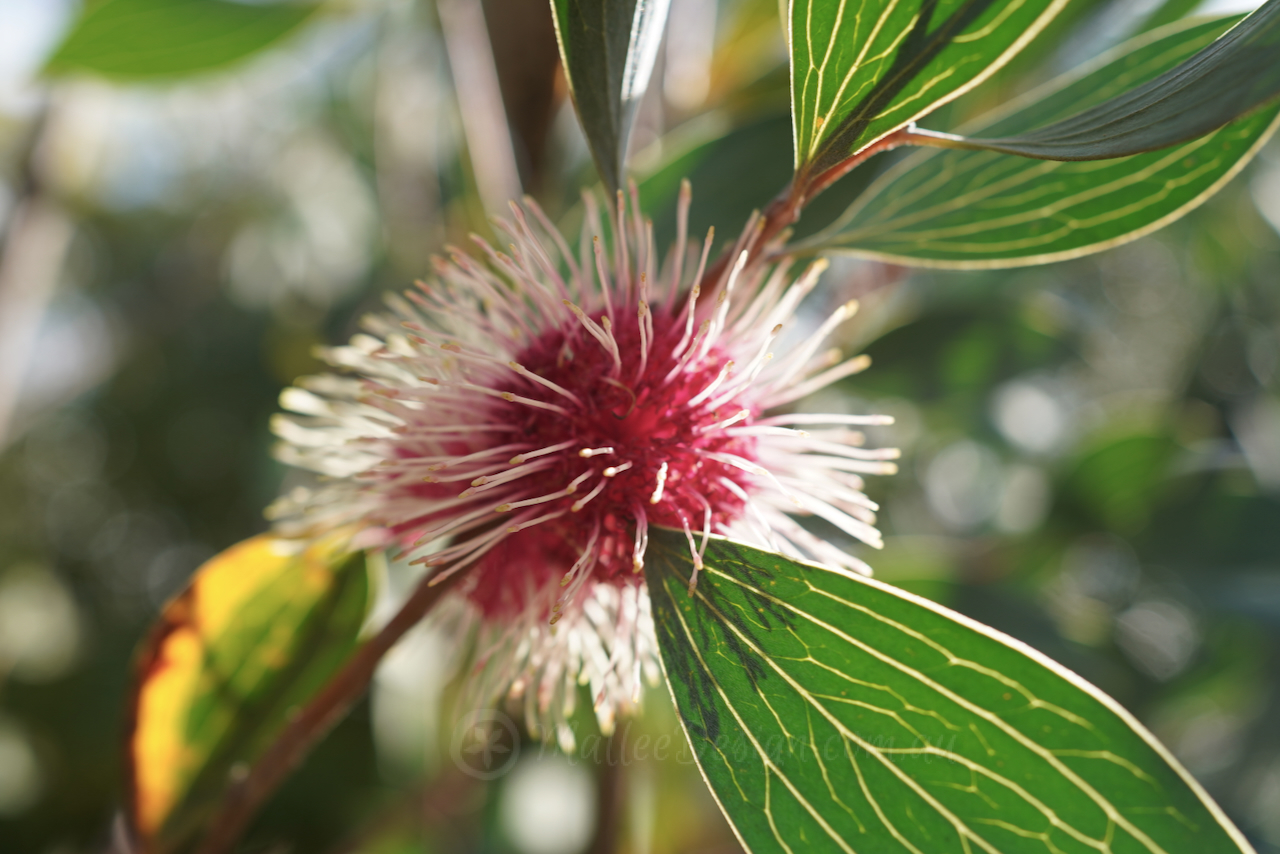
Hakea ‘Pinball’ for all
This is a grafted form of the very showy Pin Cushion Hakea, Hakea laurina, which hails from south-western WA. This is a wonderful grafted species which means we can now grow these very iconic flowers in areas with higher humidity and a heavier soil, it is actually also a cultivar: Hakea laurina x petiolaris. I…
-
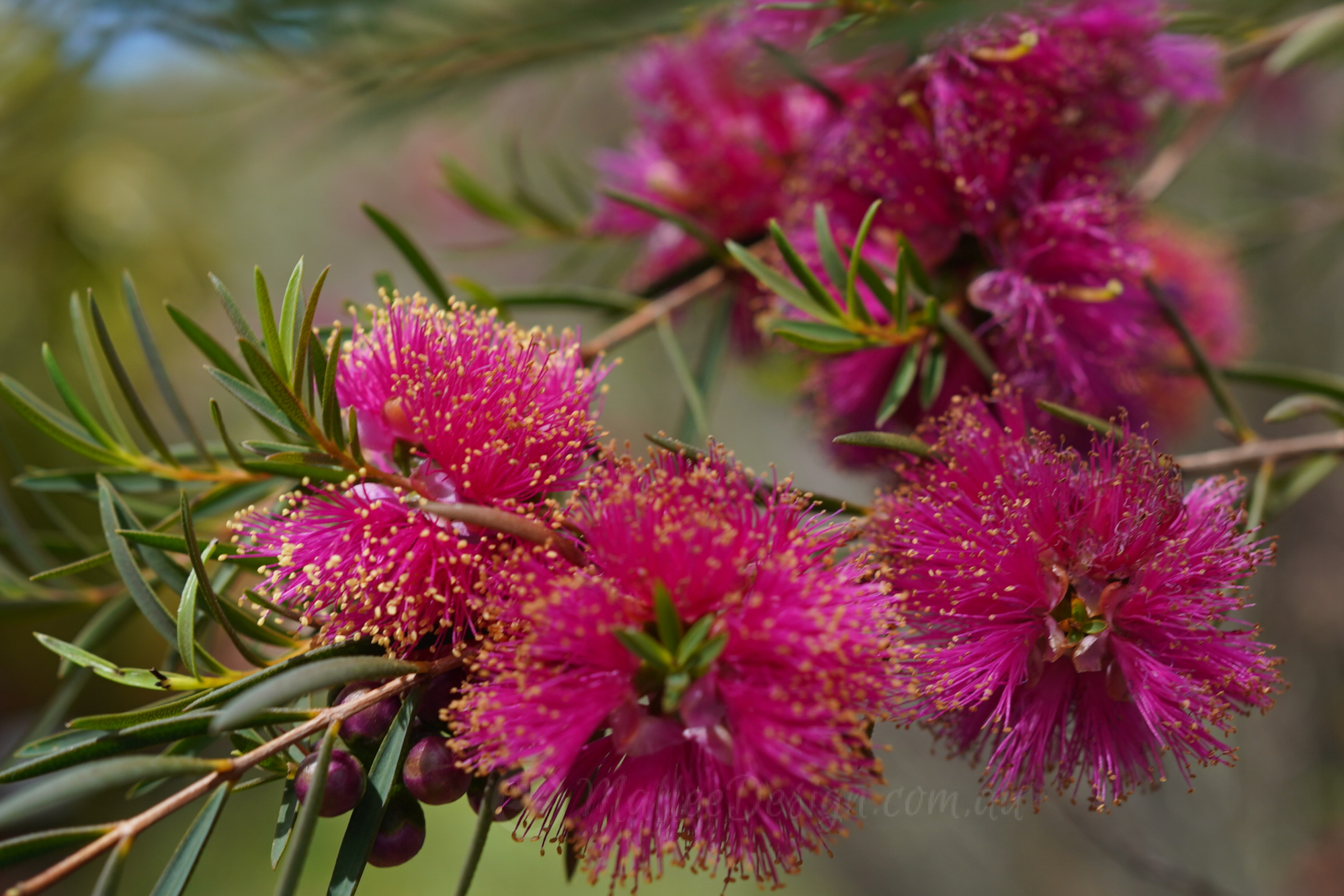
Distinct hot pink: Melaleuca fulgens
Melaleuca fulgens hails from the West of Australia, no surprise there, however it can be found growing in the southern and eastern states quite happily. This species has a long flowering period from Winter through to Summer and as the blooms are such a bright highlight it is hard to miss. This is the pink…
-

Another furry leaved beauty: Lasiopetalum baueri
This is commonly known as Slender Velvet Bush, which is a most apt description of this interesting under-storey shrub. Lasiopetalum baueri has rusty coloured , furry new growth and pretty delicate pink flowers in Winter. The dried flowers are long-lasting and have potential as a cut flower and the attractive foliage lasts for ages in…
-
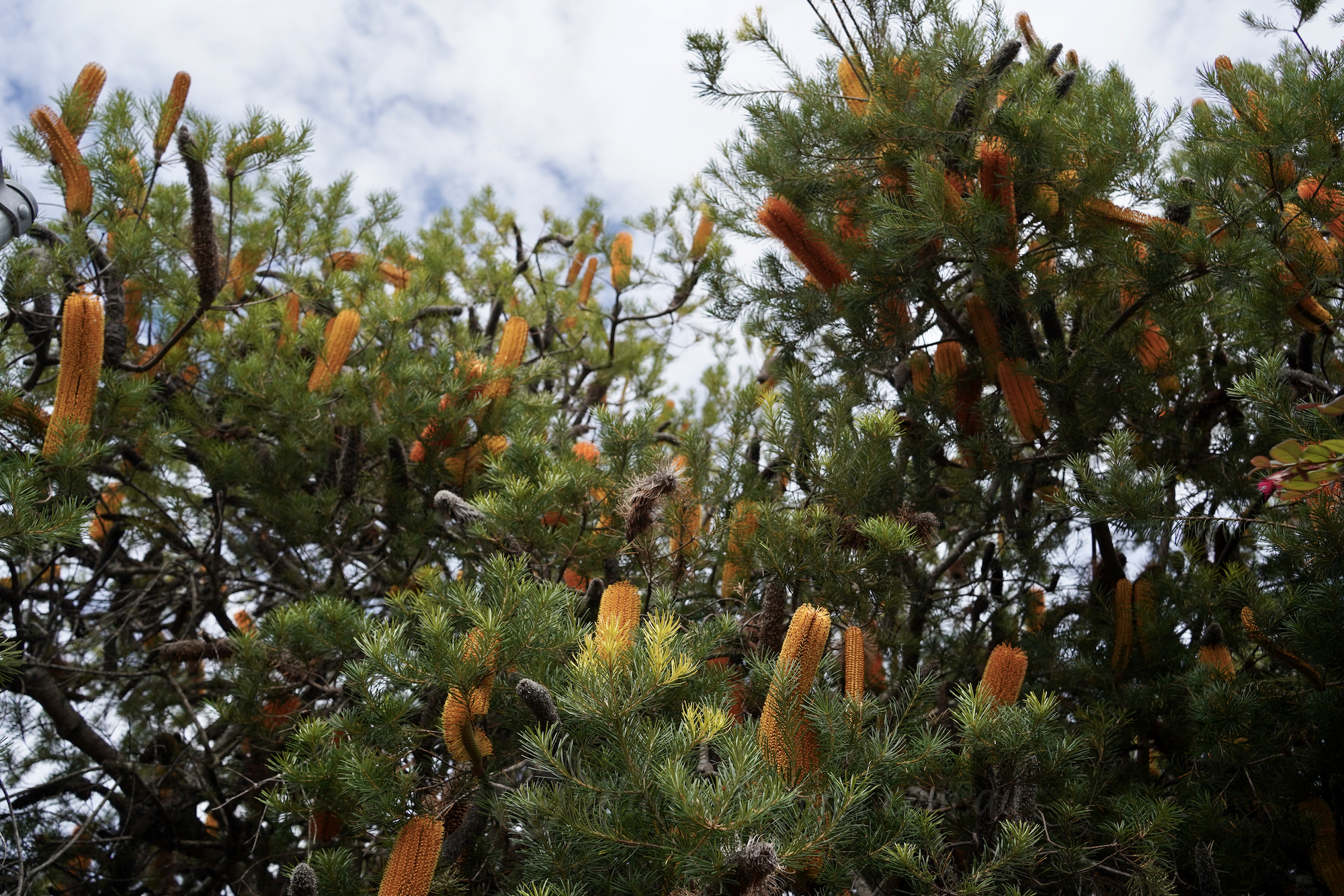
The show stopping: Banksia ‘Giant Candles’
This superb specimen of Banksia ‘Giant Candles’ forced me to drive around the block a couple of times before I could find a park and give it the photo shoot it deserves. This extra large shrub or, as I prefer to call it, small tree is a cross between Banksia ericifolia and Banksia spinulosa. Somehow…
-
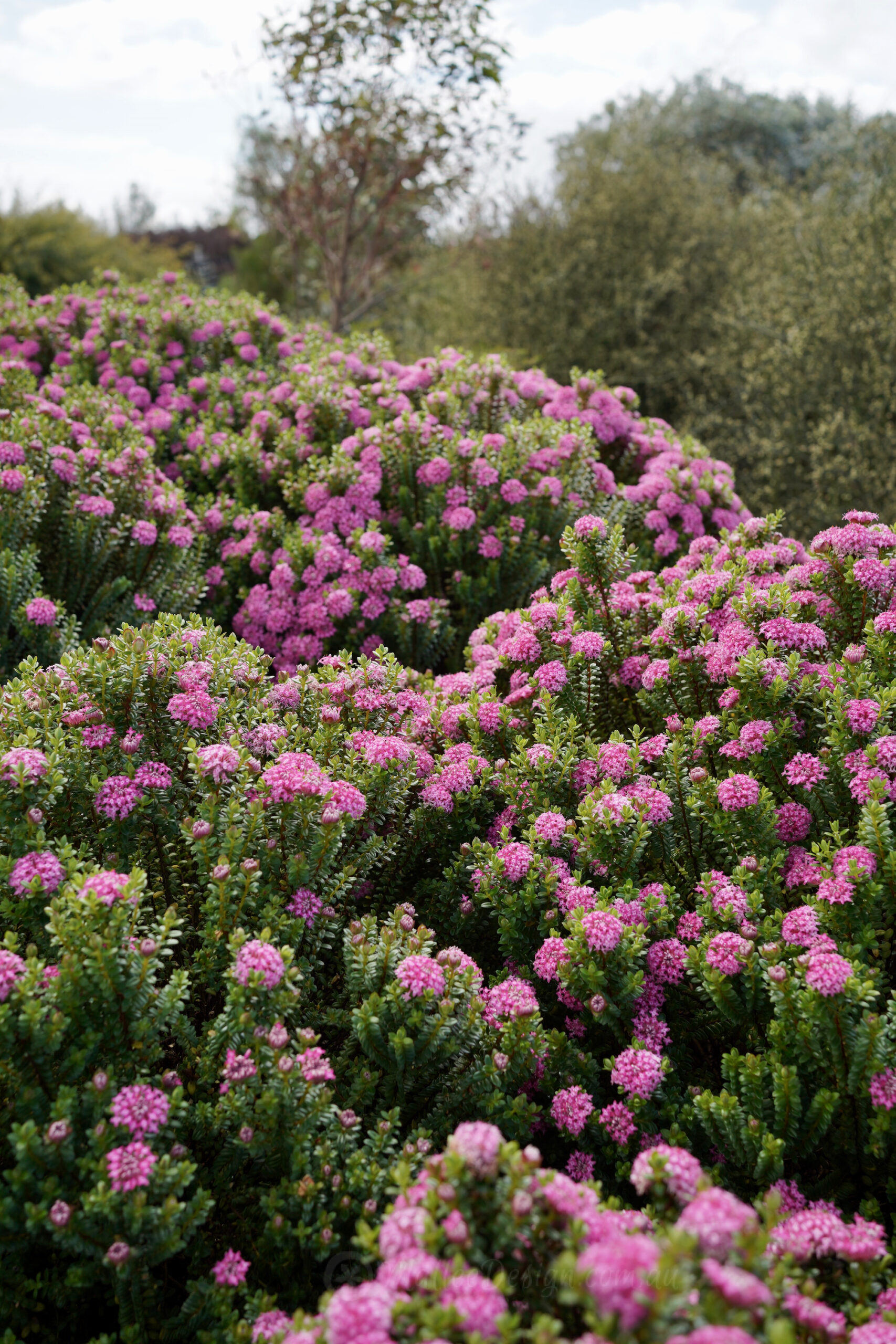
Pimelea: which one is which
I love Pimeleas, they seem to always be in flower and each state has its own unique species. Pimelea’s are a stunning addition to a garden or even a pot. They put on a show with a mass of flowers and the butterflies love them . But which one is which? We are trying our…
-
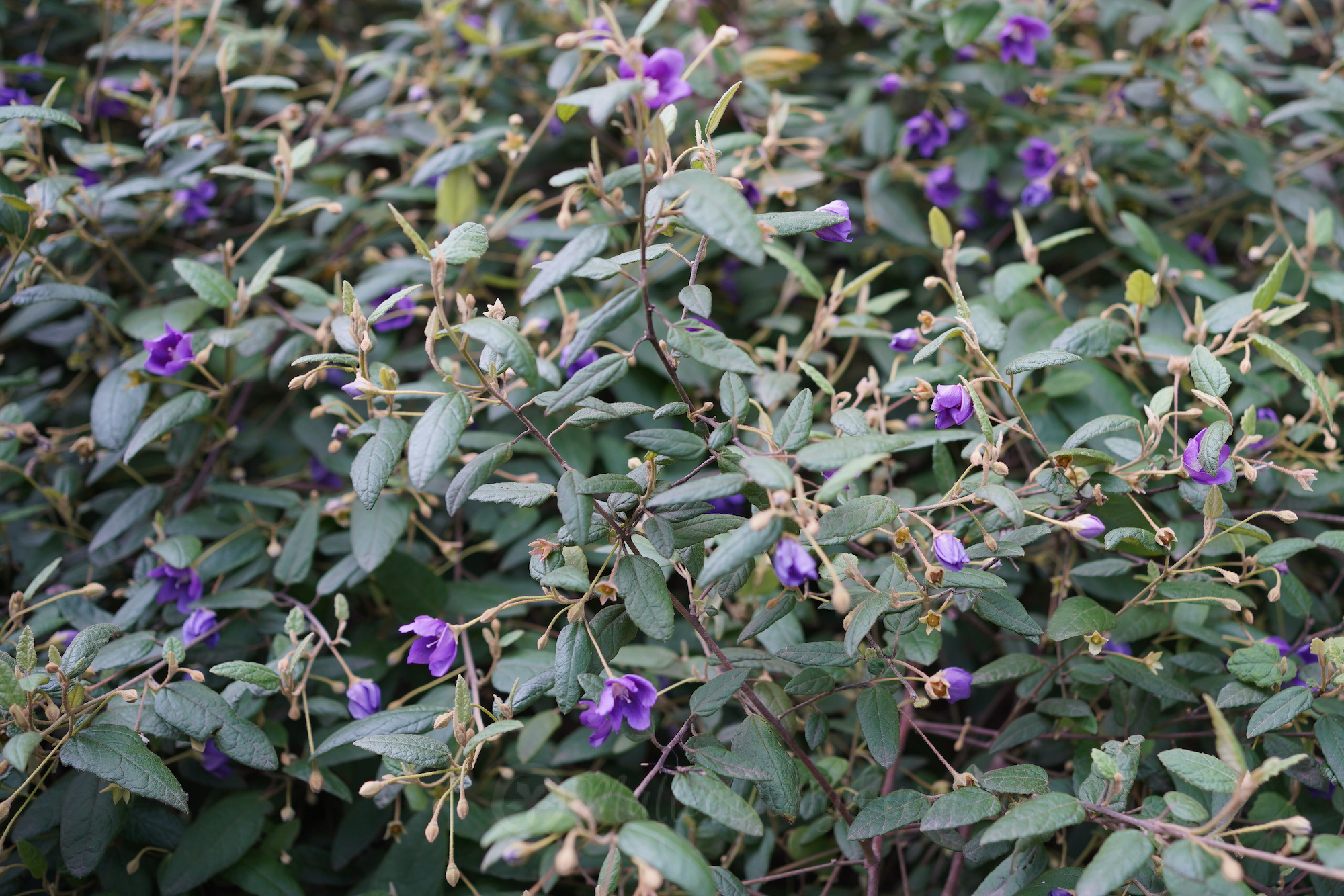
One of a kind: Howittia trilocularis
I discovered this unusual large native shrub in Cranbourne Botanical Gardens on my visit last year. I have never heard of it before but it instantly struck me with its deep purple flowers and small hairy leaves. It was planted as an understorey back drop shrub in one of the garden beds under the canopy…
-
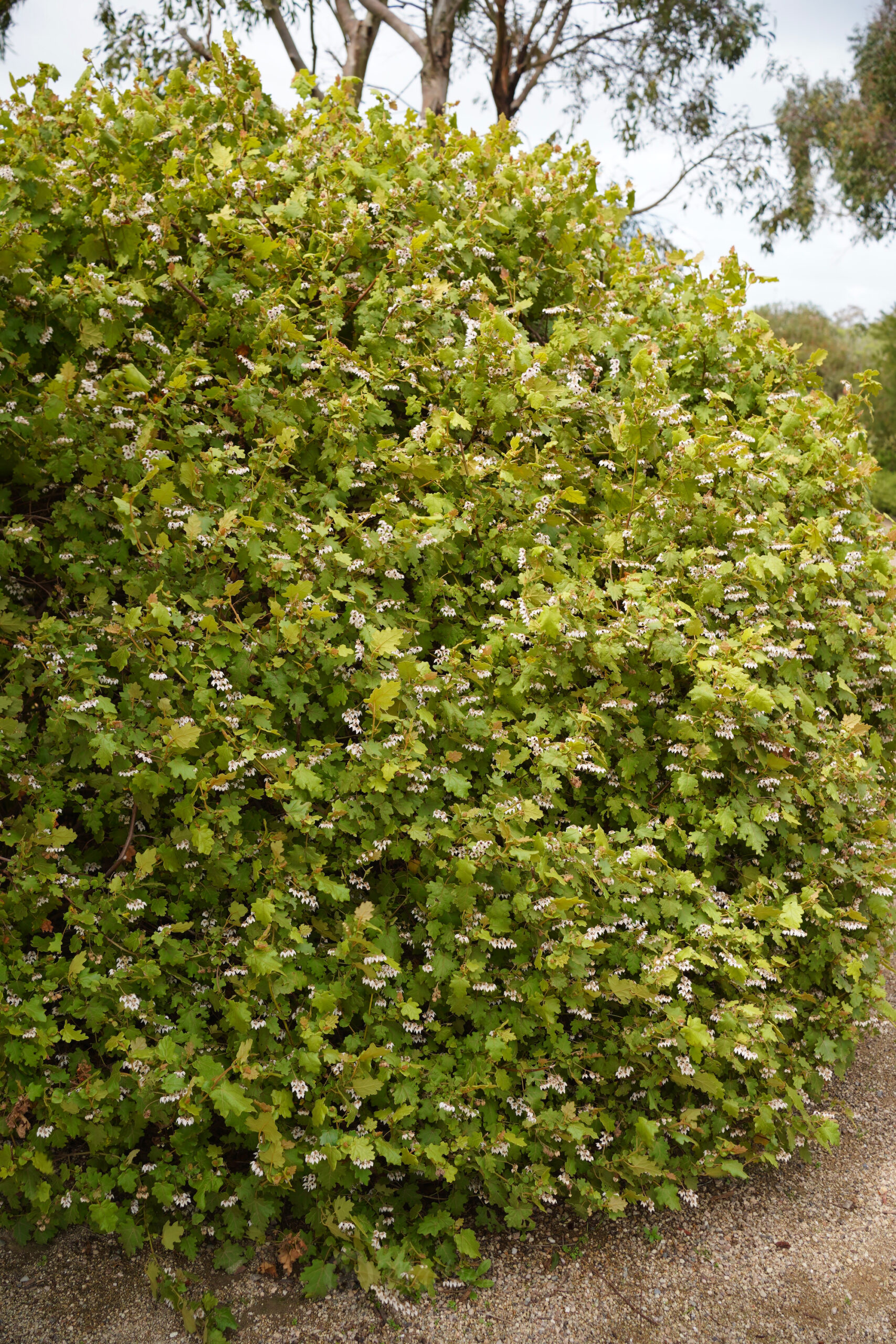
The limitless potential of Thomasia solanacea
I have written about this genus before but thought this species needs its own space on the blog as it really is an extremely versatile medium shrub. It is one of those plants for a trickier spot in the garden as it loves a dry shady position. It is endemic to south-west WA, it is…
-
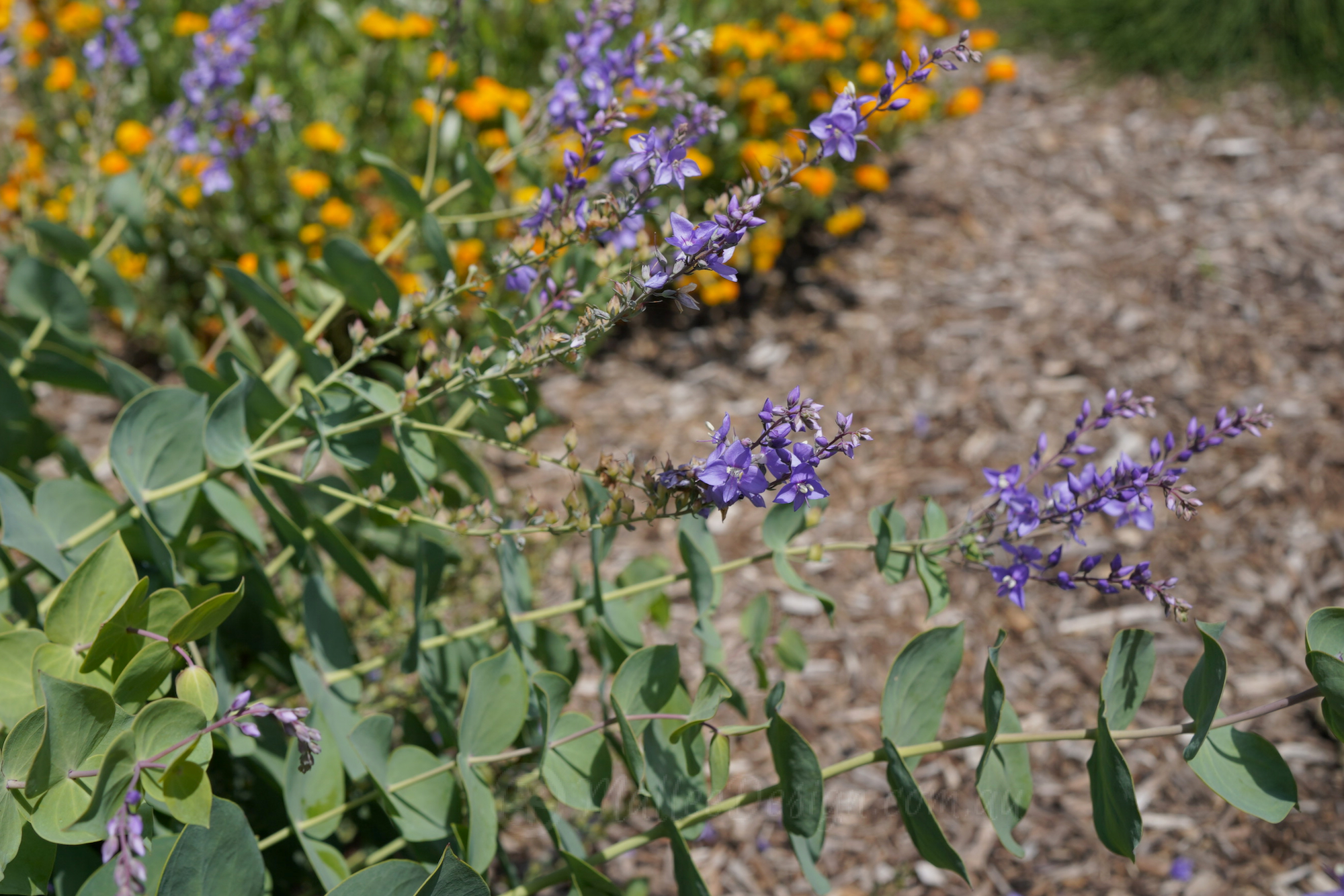
Lovely shrub of many names: Veronica perfoliata
This is to my knowledge currently Veronica perfoliata, it has gone through several differing identities and name changes, I won’t go into all of that, it just seems a shame as I think it may have detracted people from knowing about this useful plant. Firstly I love it because it has a very Eucalypt like foliage…
-

Merry NSW Christmas Bush: Ceratopetalum gummiferum
I am a bit of a Grinch when it comes to Christmas and often one of the things which pulls me our of my un-festive slump is our Ceratopetalum gummiferum or native Christmas Bush. This year I was a little late, as many have finished thier show by the time Christmas actually arrives. However, I…
-

Darwinia citriodora another WA toughie
To be honest I didn’t realise this lovely medium shrub hailed from the West, silly me. I think I assumed Darwinias were local to coastal NSW due to the prominence of taxifolia and fascicularis when I go bushwalking close to home. They are a stunning Genus, all have intresting leaf structure and get covered in…
-
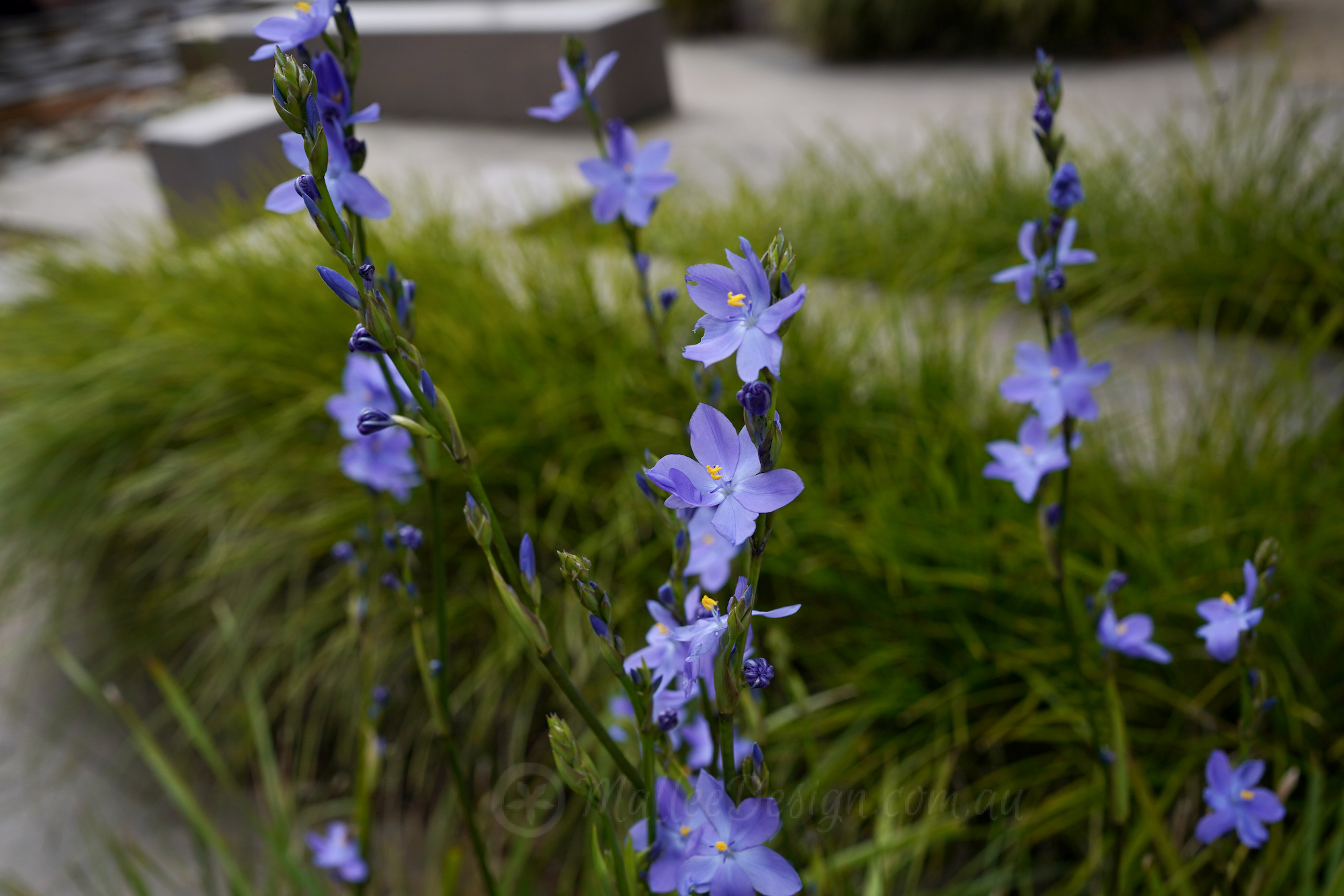
Good morning Iris: Orthrosanthus multiflorus
The flower spikes on the morning Iris really do say good morning all through Spring, it is such a luminous shade of deep blue almost purple that is impossible not to notice. The flowers are displayed on upright stems rising almost a metre above the tufted foliage. Orthrosanthus multiflorus can be found growing naturally on…
-
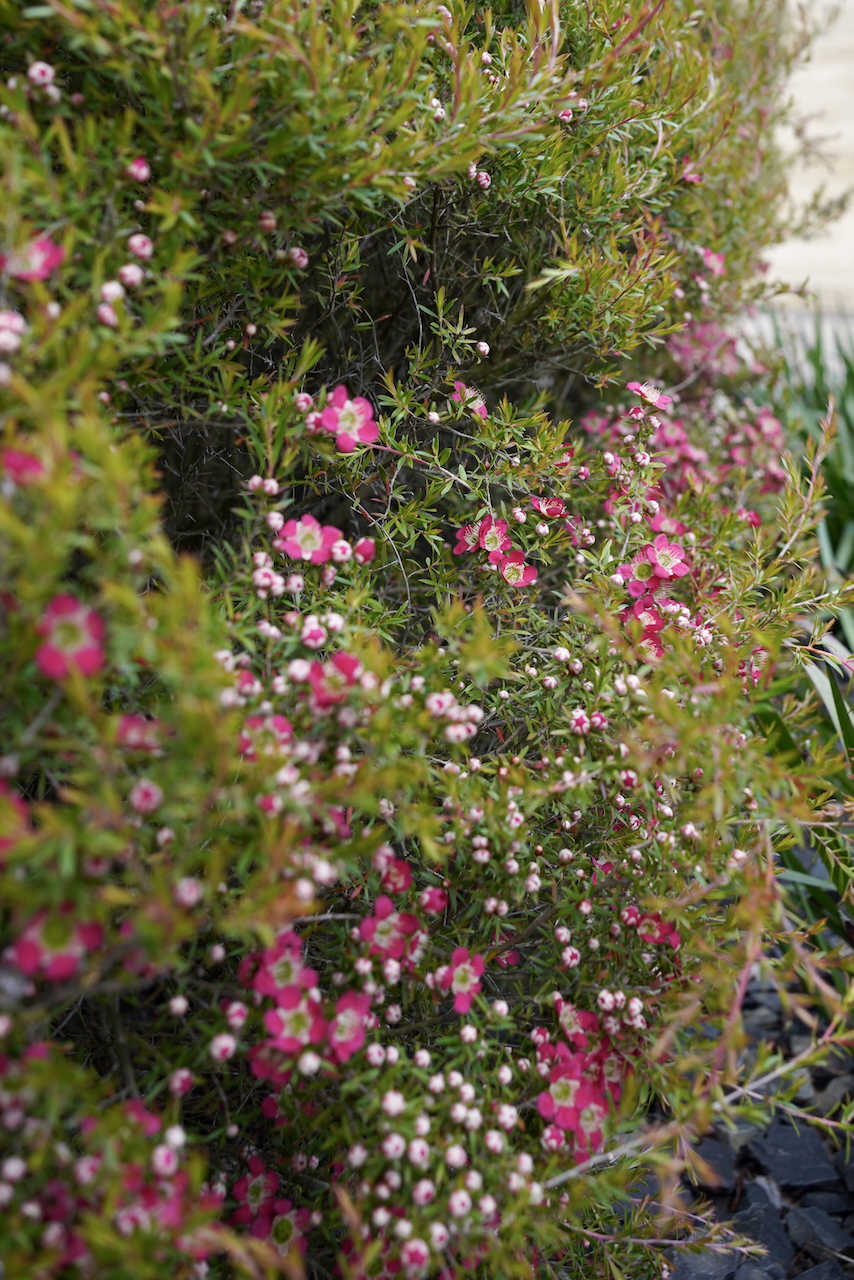
The oh so fun Leptospermum ‘outrageous’
Leptospermum ‘Outrageous’ puts on a show of brilliant pink-red flowers in Spring, and it absolutely covers itself as the weeks go on. This medium shrub has delicate weeping branches and it can be pruned into a low hedge or border plant. It is also showy enough to be a great feature shrub even when not…
-
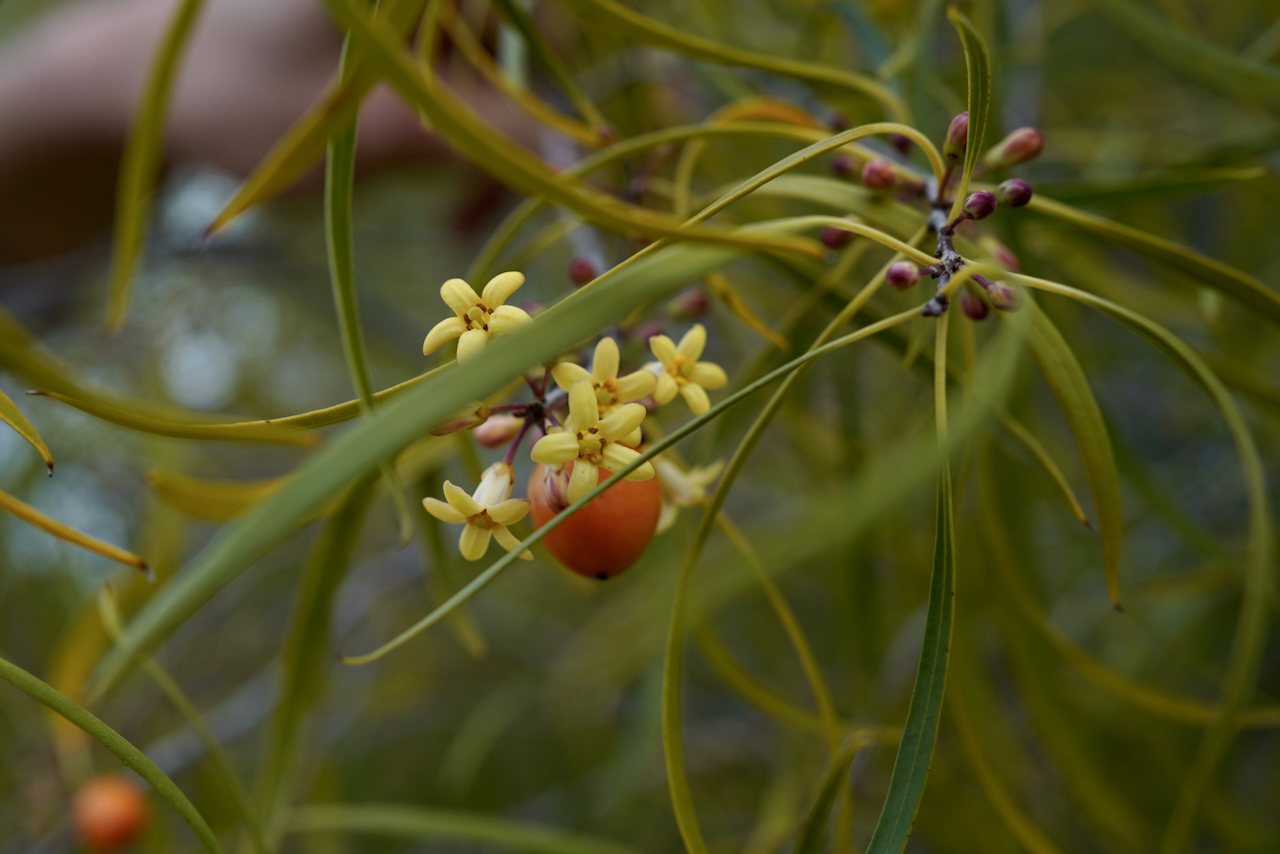
Powerful medicinal tree: Pittosporum angustifolium
This is a small native Medicine plant affectionately known as Gumbi Gumbi, it actually has many names as it has many uses. It is also known as Western Pittosporum, Berrigan, Bitter Bush, Cattle Bush, Cheesewood, Butter Bush, Native Willow or Native Apricot. The properties of Gumbi Gumbi are quite potent and only those familiar with…
-

don’t be confused by Grevillea buxifolia
This is probably Grevillea buxifolia subsp. buxifolia which is not to be confused with Grevillea sphacelata, in the Grevillea bibles by Peter Olde and Neil Marriott sphacelata a “Related or confusing species”. This couldn’t be more apt, I spent some time going down a plant nerd rabbit hole on this. These photos were taken in…
-
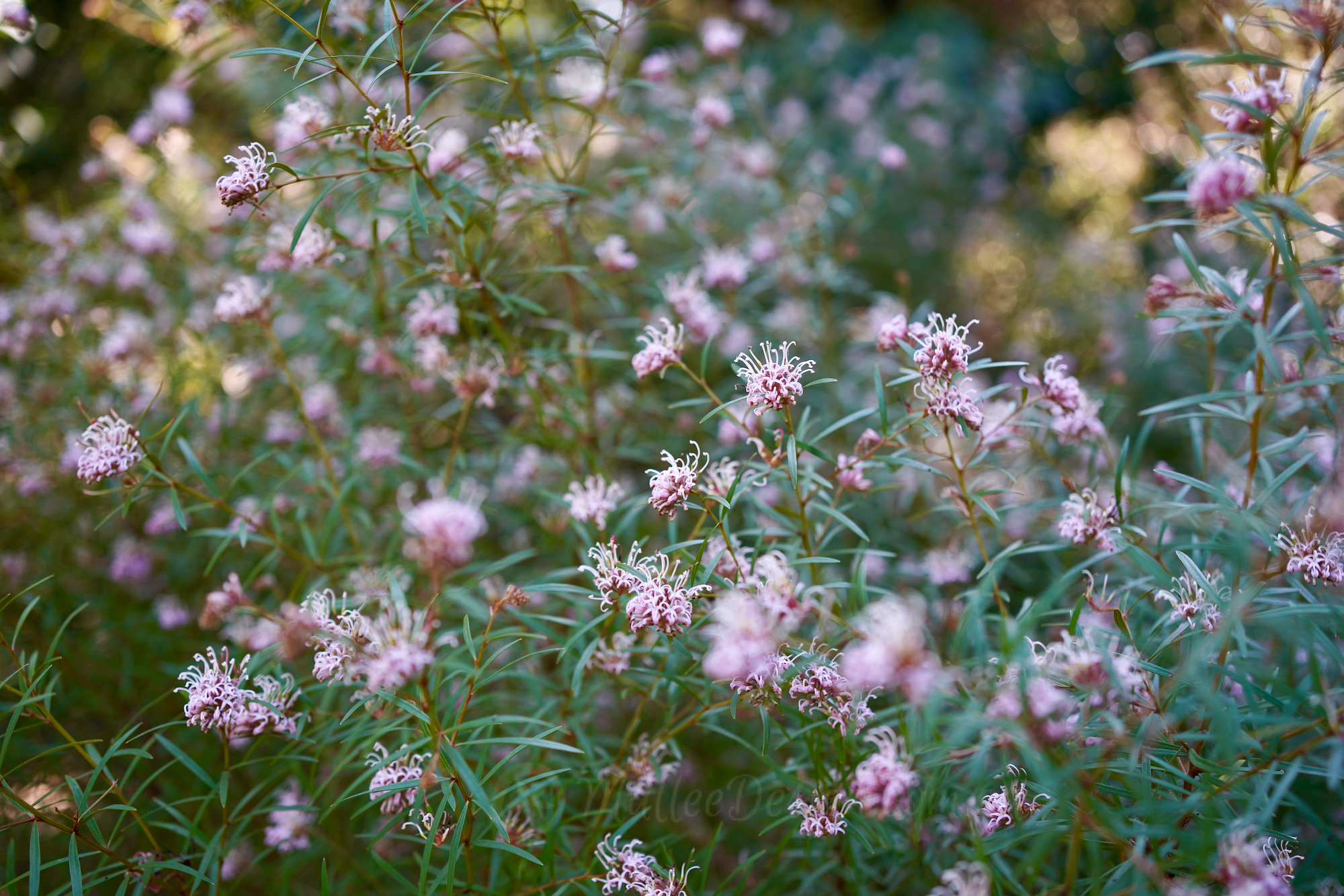
Bee Friendly Grevillea: Grevillea sericea
This is a local spider flower Grevillea which has huge ornamental potential and is a master at attracting native pollinator and honey bees to your garden. It is quite a common species on the east coast of NSW and can be found growing naturally from Toronto in the north to Heathcote in the South of…
-
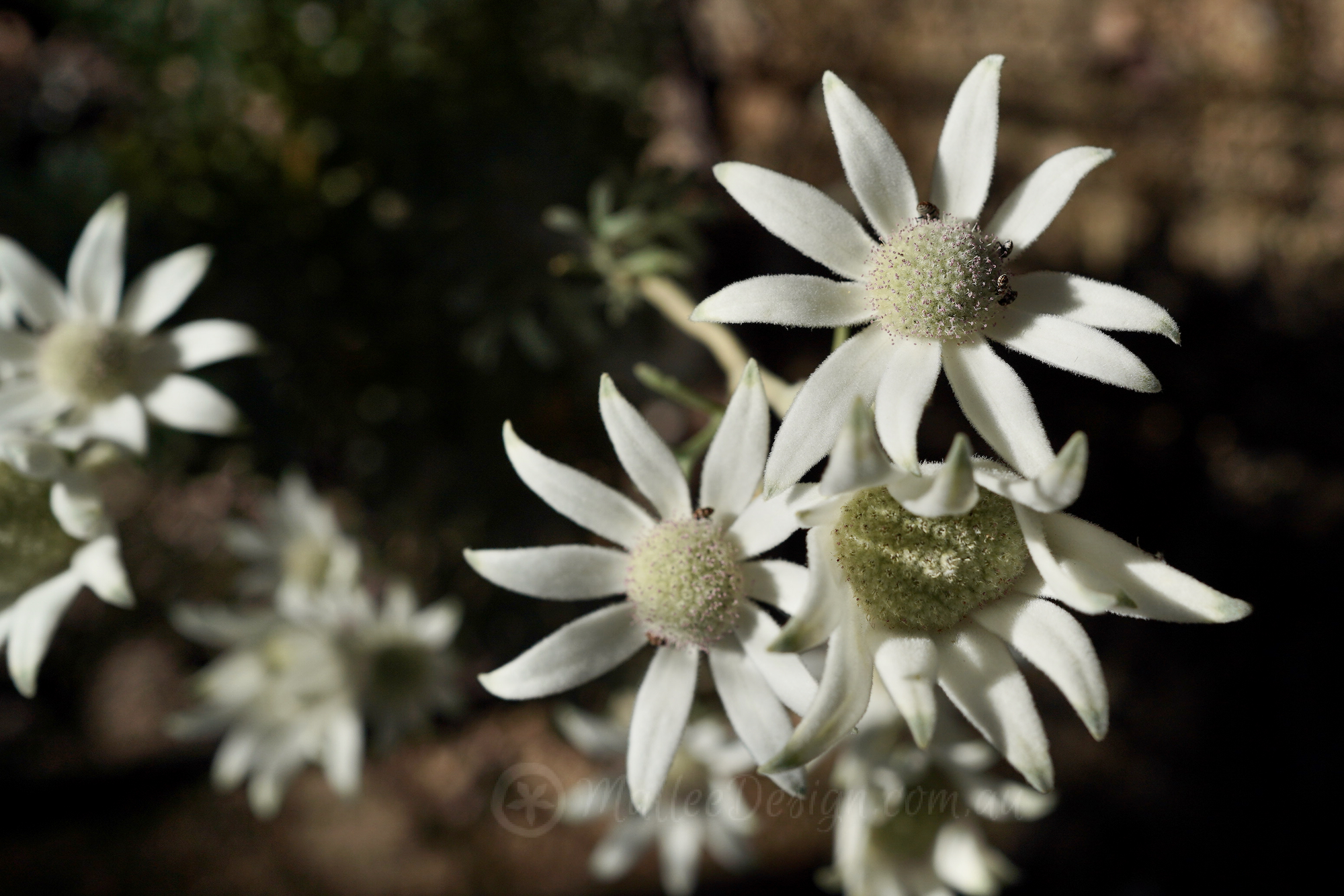
Tough as nails: Actinotus helianthi
I’ve learnt my lesson, plant them and leave them alone! I planted 5 potted Actinotus helianthi last year in my garden, 1 remains, the others were over loved and over watered I think, or there may have been some trampling going on courtesy of kids playing on the swing. Actinotus helianthi are wildflowers, it can…
-
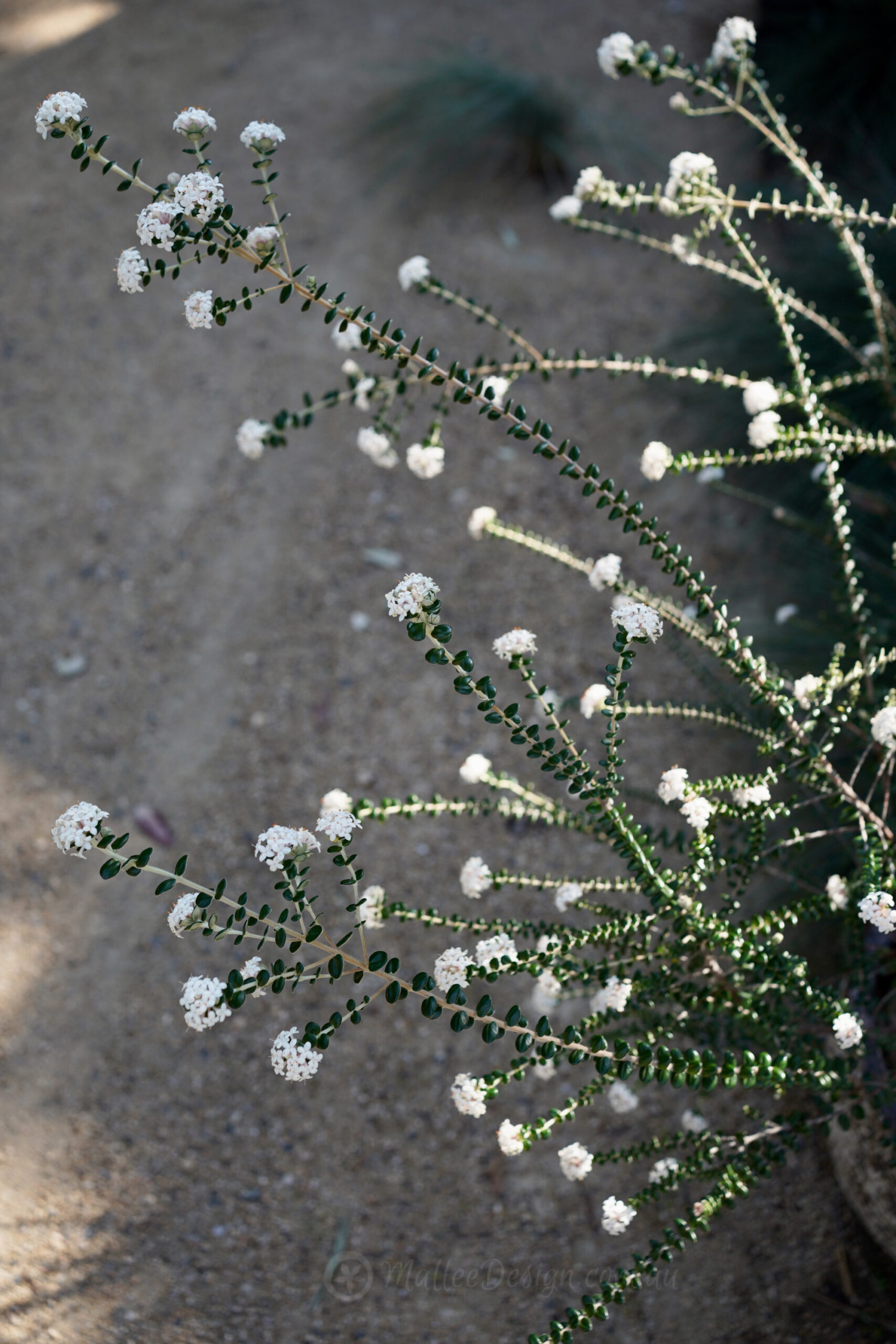
Pimelea nivea: A shrub of contrasts
Pimeleas are wonderful species, they grow quickly and flower often, for long periods of time. However this particular Pimelea is my favourite of all time, forever. This is Pimelea nivea and hails from my home state of Tasmania, I have seen it growing on rocky headlands and gravely Eucalyptus under storey and it is a very…
-
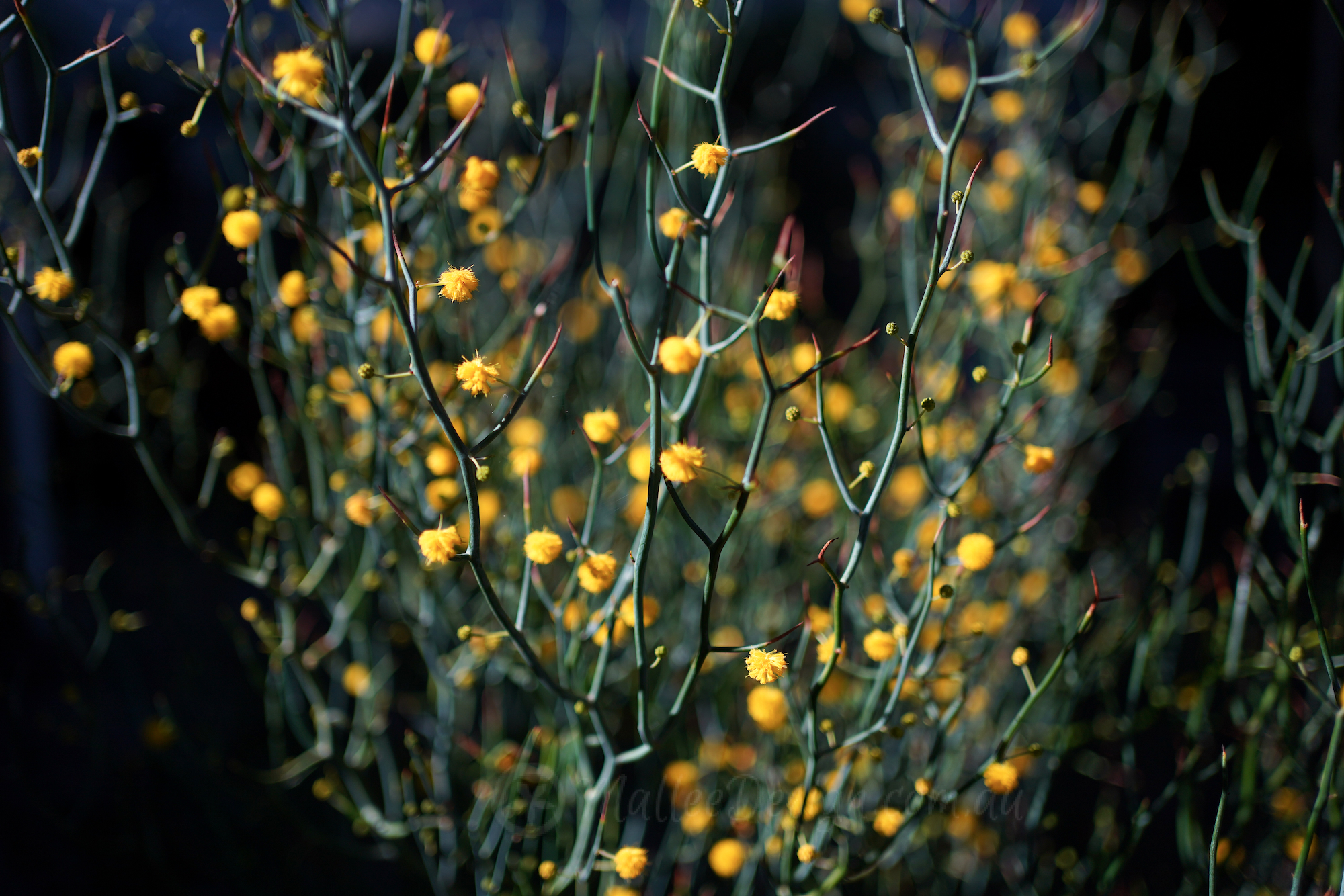
Happy Wattle Day: Acacia aphylla
Happy National Wattle Day and the official first day of Spring, although the weather where I live has been behaving more like Summer, which is extremely concerning. Nevertheless I am always happy to celebrate our Acacia species and this one I have been so patiently waiting for it to flower, and finally starting in Autumn…
-
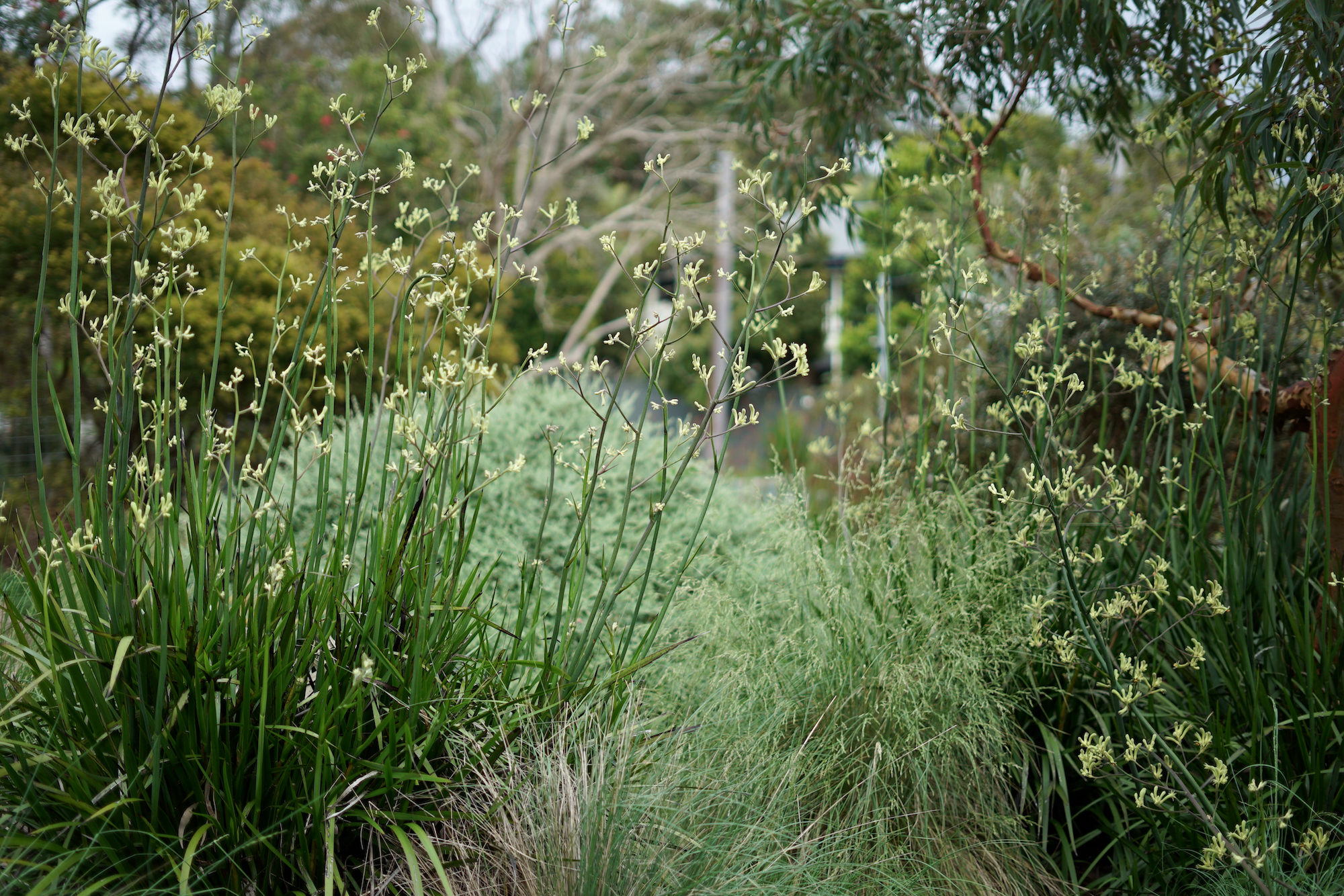
Anigozanthos ‘Landscape Lime’the underdog
In the next couple of months Kangaroo Paws all over Australia will be stretching their stems for the sun, flaunting their flower ladened spikes for the birds and the bees. But not just for the wildlife, Anigozanthos are undoubtedly one of our nations most iconic genus and with recent breeding in the taller range, they…
-
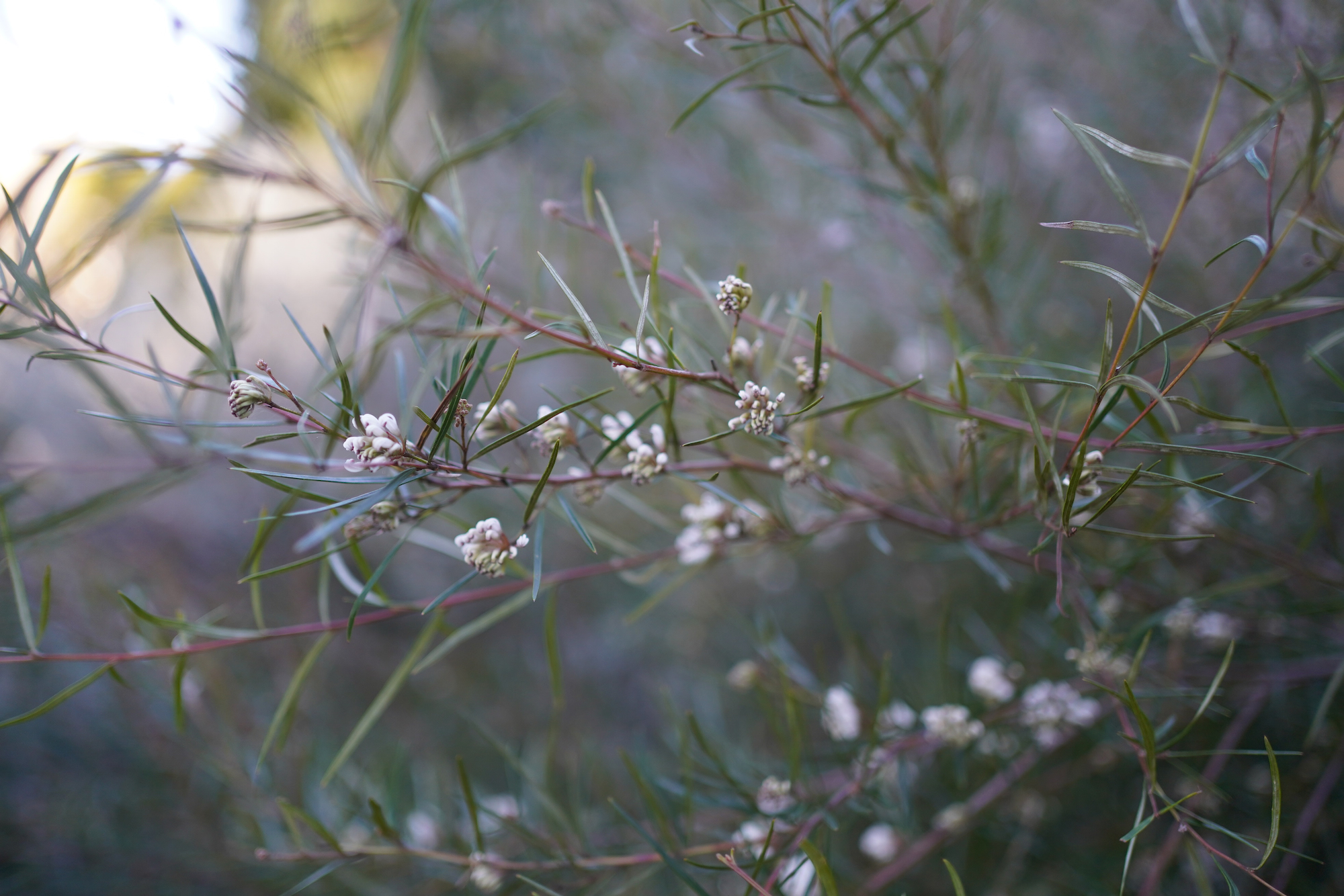
Wispy and Light: Grevillea linearifolia
As the name suggests this is a Grevillea with linear leaves, long skinny leaves which give it a gentle wispy habit. Combined with the pink new growth on the end of each stem, this is a showy species whether in flower or not. Grevillea linearifolia can be found naturally in the Greater Sydney Basin bushland…
-
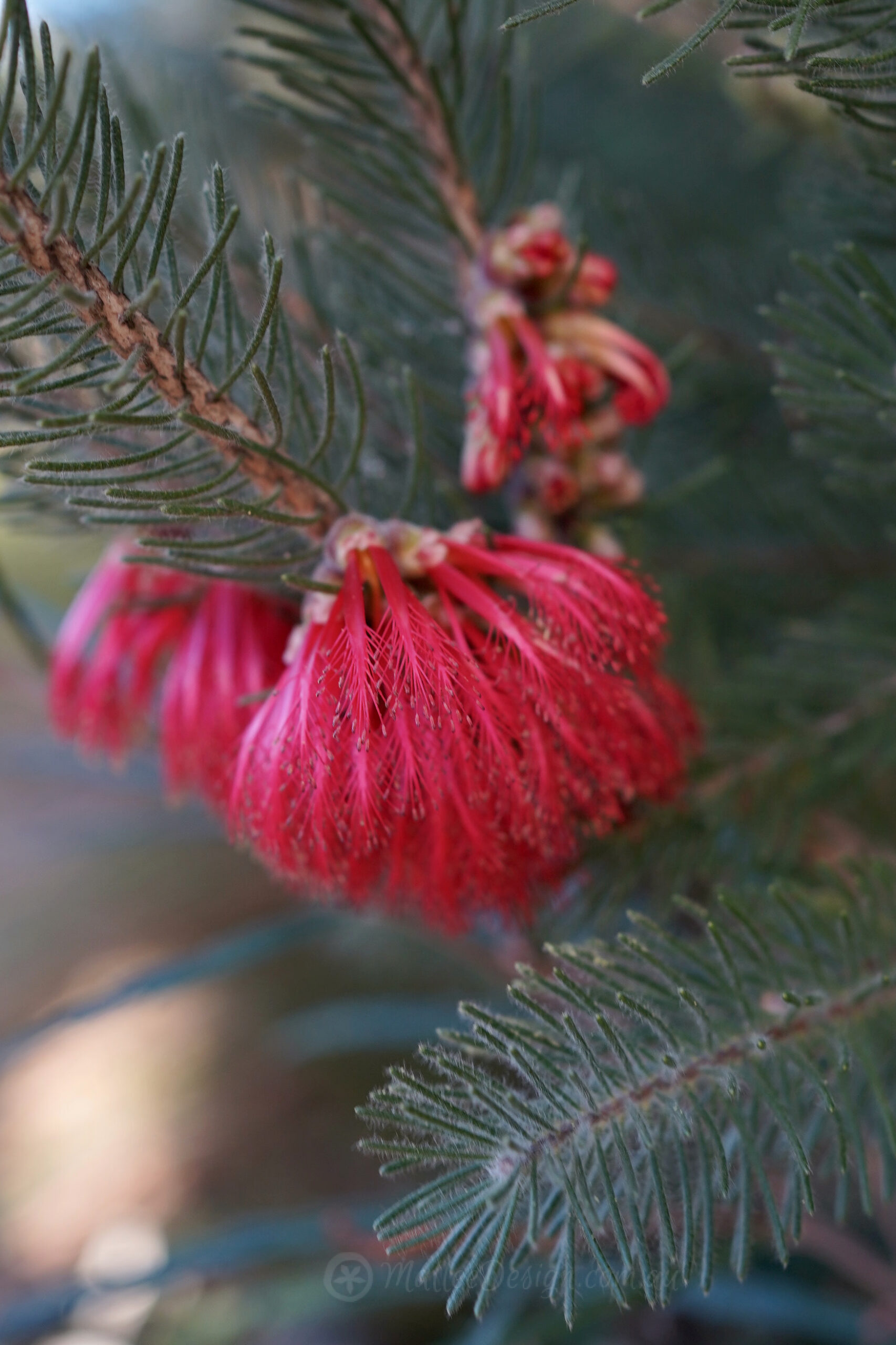
Calothamnus quadrifidus grey: texture and toughness
I thought I had already dedicated a blog post to this steadfast native shrub but have just realised it has featured a few times but hasn’t been praised individually yet. Very strange as this is a staple in many of my screening plantings or used as a feature shrub, especially as it will quite happily…
-
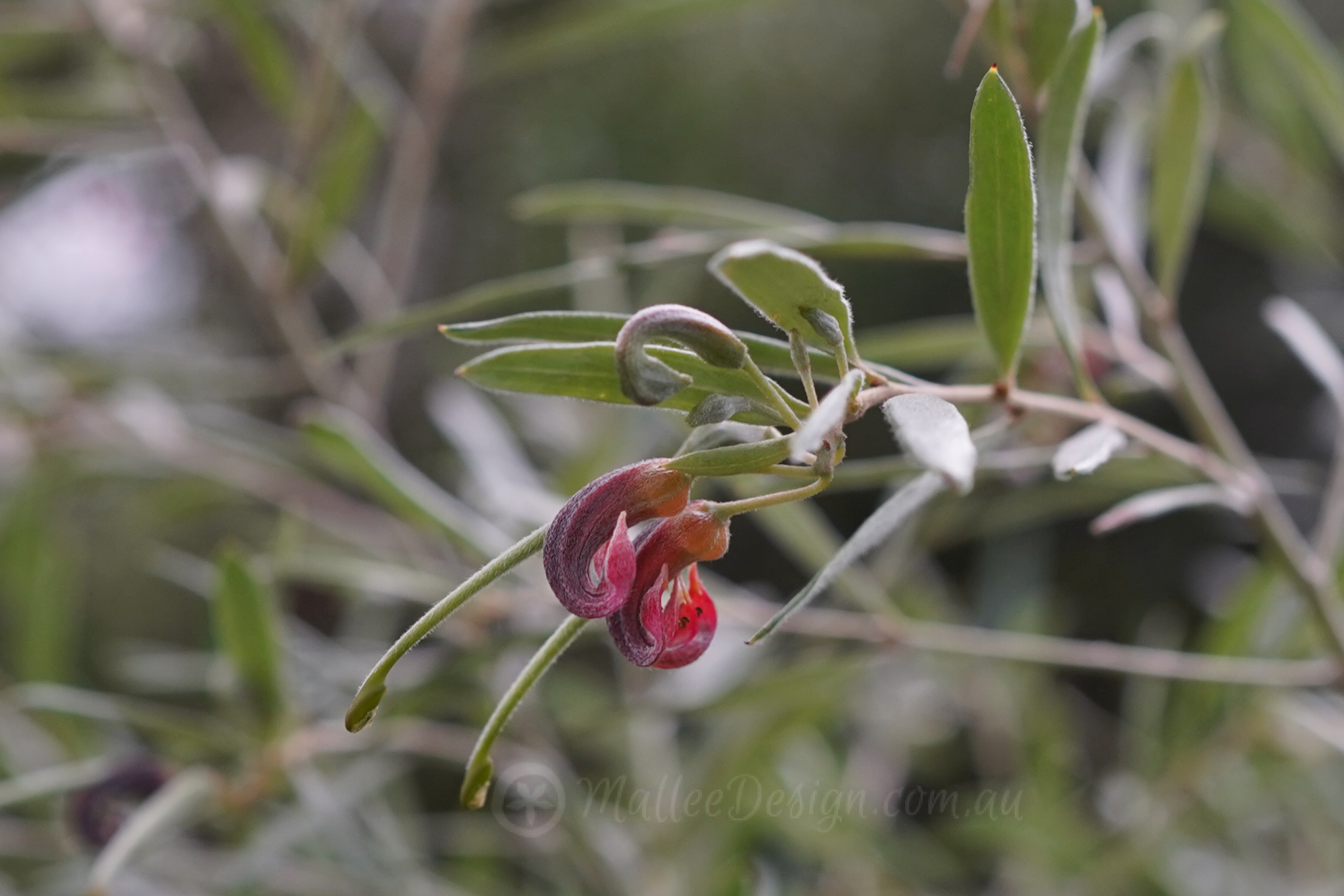
Outstanding: Grevillea arenaria
This is an outstanding plant for attracting birds, providing nesting habitat, shelter and nectar for honeyeaters and insectivorous birds. George Adams ‘Birdscaping Australian Gardens’ Thanks George I couldn’t have said it any better! I love my copy of the above book and use it all the time, I also love Grevillea arenaria or the Nepean…
Tag: well drained soil


